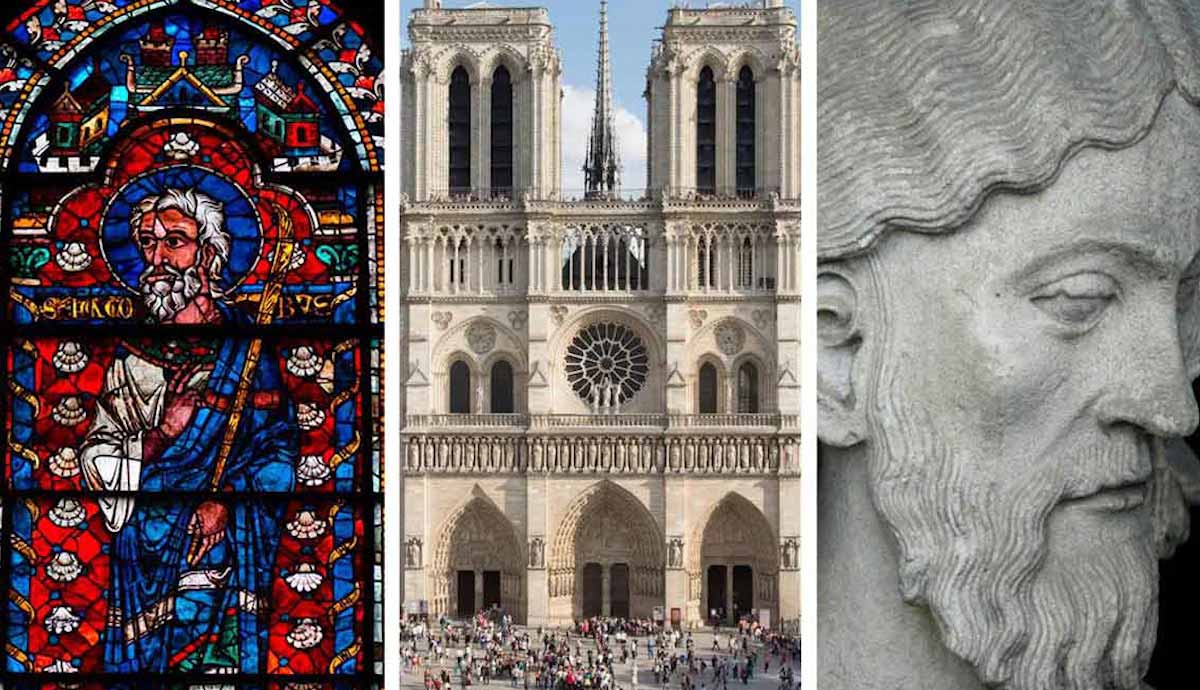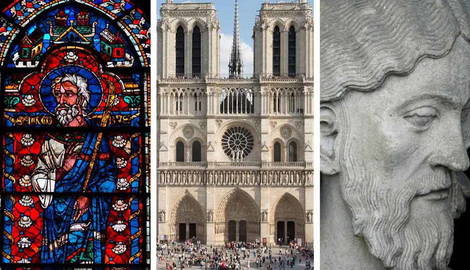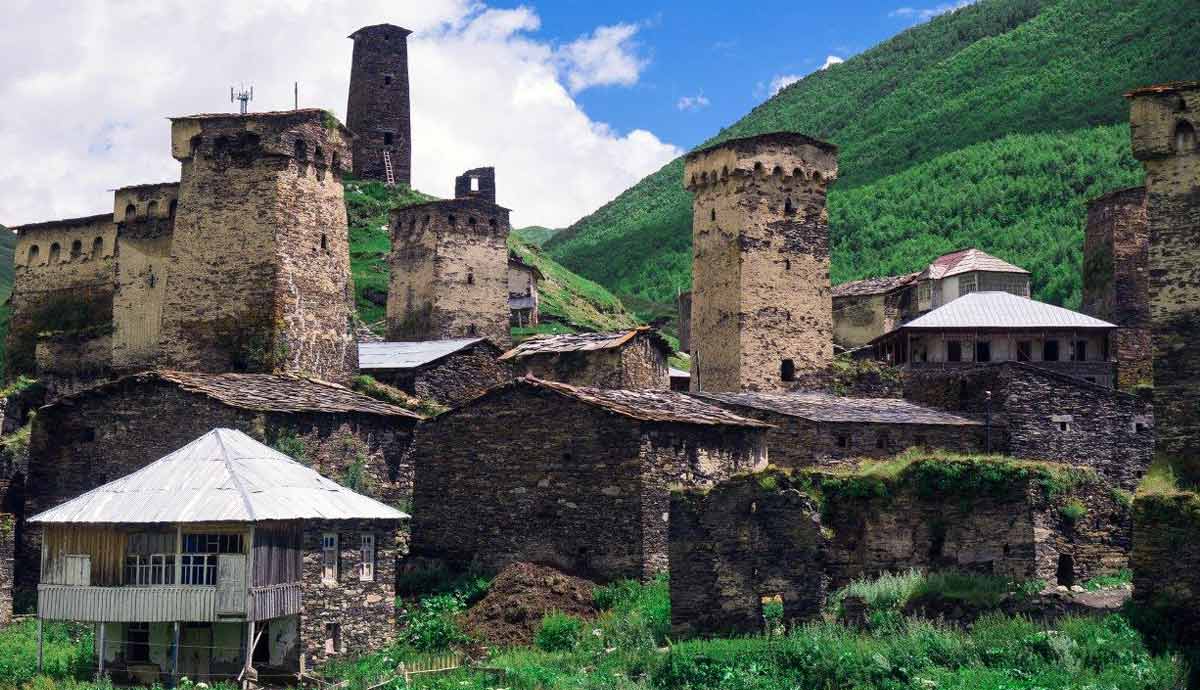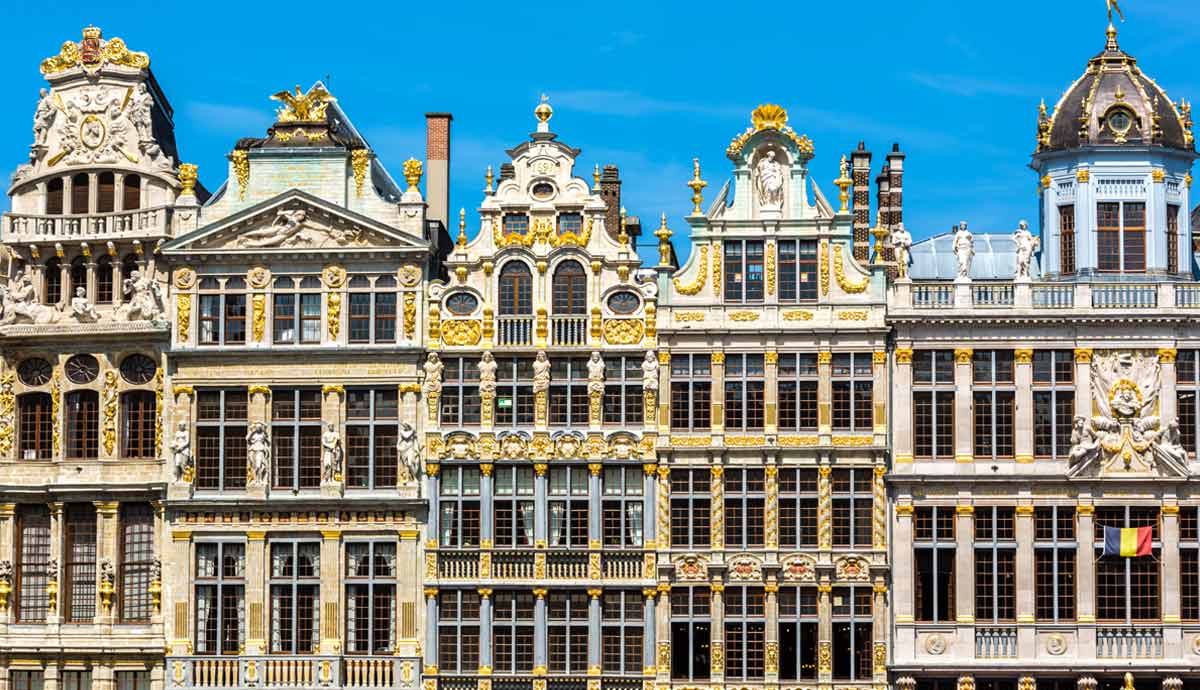
A wildly creative form of sacral architecture emerged in Northern France in the late 12th century. Suddenly, masons could flood churches with light using large windows, and could turn structural elements into canvases for naturalistic sculpture. This was the dawn of High Gothic or Classic Gothic architecture. For the next century the sky was the limit. Read on, and we will survey the most beautiful Gothic cathedrals from this vibrant period.
1. Chartres Cathedral

For a magnificent starting point, Chartres Cathedral is an easy day trip from Paris. This seminal landmark has changed little since the 1200s, through wars and the turmoil of the French Revolution. The joy of Chartres Cathedral is in its profuse use of sculpture and stained glass.
Extraordinary carvings greet you on the exterior, adorning the west, north, and south portals. These are richly detailed interpretations of Old Testament and New Testament figures and stories.
Inside is an unparalleled display of Medieval stained glass. There are more than 170 windows, almost all original. Architectural innovations like flying buttresses and six-part rib vaults allowed for higher and thinner walls. In turn, they enabled larger windows than previously possible. Symbolically illuminated by the light of God, they tell the lives of saints and depict wealthy donors and trade guilds.
There is a deep blue that pervades the windows, celebrated as Chartres Blue. This comes from cobalt oxide, added while the glass was still molten. That piercing tone has survived the years better than reds and greens from the period. In places the window themes complement the external sculpture. This is the case for the sublime rose window (c. 1215) on the north transept, devoted to the Virgin Mary.
2. Reims Cathedral

The mass of sculpture on the west facade of Reims Cathedral captures the effusive spirit of Classic Gothic architecture. An important church has stood on this site since the days of the Franks in the 5th century CE. Reims was the City of Coronations, and a long line of Medieval kings and Holy Roman Emperors were crowned here. The cathedral burned in the early 13th century, leading to a complete rebuild using Chartres Cathedral as the blueprint.
Shifting the structural load to flying buttresses allowed other kinds of creativity to bloom. Columns no longer needed to be the kind of massive pillars you see in the austere Romanesque churches that came before. Elegant clustered columns flank the nave. These rise to capitals with plant and animal motifs, and then merge seamlessly with the pointed rib vaults.
Over the next few decades, the new church was endowed with some of the earliest decorative elements of their kind. In that vein are the clerestory windows and north rose window on the transept. Here bar tracery replaced the more functional plate tracery. These windows have slender stone bars, or mullions, instead of slabs of stone. The result is more light and more license for intricacy.
3. Notre-Dame de Paris

Now to take it back now to the Gothic cathedral that refined the use of rib vaults and flying buttresses in the early 13th century. Some of the earliest sexpartite rib vaulting can be seen in the 12th-century choir of Basilica of Saint-Denis. Found in the north of Paris, it is held up as the font of French Gothic architecture. It inspired the Bishop of Paris, Maurice de Sully (d. 1196) to rebuild Notre-Dame de Paris in this new style.
Form and function are in perfect harmony, as piers of flying buttresses are crowned by large crocketed pinnacles. Looking like little spires, these intricately carved elements have an ornamental value. They also add additional weight, further removing the load from the walls.
Notre-Dame de Paris is loved the world over for the abundant sculpture on the west facade. This is in the tradition of the Poor Man’s Bible. Here Bible stories are depicted with a new degree of naturalism for a congregation that was mostly illiterate.
It is easy to be drawn in by the central portal, showing the Last Judgment. You will see the saved on his right hand and the damned to the lower left. There’s a practical aspect to some of this sculpture. Not least in the iconic gargoyles, which serve as water spouts.

Many of the images of saints were decapitated in the anti-clerical fervor of the revolution. So the prolific restorer, Eugène Viollet-le-Duc (1814-1879), stepped in during the 1840s. He was responsible for much of what you see on the west facade. Viollet-le-Duc also designed the openwork Gothic Revival spire lost in the fire of 2019.
If there is one original Medieval detail to see inside it is the south rose window, completed in the mid-1200s. More than 40 feet in diameter, this masterpiece has 84 panels over four circles. In the first two you can make out the twelve apostles, accompanied by the patron saints and martyrs of Paris.
This window is from a second phase of Classic Gothic architecture dubbed “Rayonnant,” or “shining.” The term refers to the exceptional quality that builders could achieve with rose windows at this time.
4. Bourges Cathedral

About two hours south of Paris, the city of Bourges once held high political importance as the seat of the Duchy of Berry. Bourges’ Archdiocese has a cathedral to match, built around the same time as Chartres Cathedral.
Something to note about Bourges Cathedral is the short construction period. Most of the work was completed within 40 years, by the 1230s. This has granted the building a rare degree of architectural consistency. Almost everything you see is in a uniform style, and for this Bourges is regarded as one of the greatest Gothic cathedrals in Europe.
We have talked a lot about portal carvings and stained glass. These exist in an amazing state of preservation at Bourges Cathedral. Still, the priority should be the vestiges of the stone rood screen, a decorative gallery installed around 1235.
Previously dividing the nave from the choir, the preserve of the clergy, this is a sumptuous example of Classic Gothic artistry. Sadly, the rood screen was damaged in the Wars of Religion in the 16th century, and then finished off when the choir was remodeled in the 18th century. Today, you can see evocative pieces of the rood screen in the crypt, hinting at the splendor of what came before.
As with Chartres, Bourges is blessed with an abundance of early 13th century stained glass. Much of this is concentrated in the apse at the east end of the building. The most celebrated example, the Joseph Window, is in the ambulatory at ground level. There are few places in the world where you can get so close to 800-year-old stained glass.
5. Amiens Cathedral

When it comes to scale, Amiens Cathedral is head and shoulders above any other cathedral from the period. In fact, you could fit Paris’s Notre-Dame inside twice over. Amiens Cathedral came later, in the second half of the 13th century.
More than any other cathedral in this article, it demonstrates the stunning possibilities achieved by flying buttresses. Despite their slender construction the walls of the choir and the nave walls reached new heights, giving the building an ethereal airiness.
The nave at Amiens attracts your gaze upwards, at almost 140 feet from floor to vault. Meanwhile, the nave’s soaring arcades are exactly half the height of the wall. That sense of symmetry pervades the building. For instance, the length of the nave and the choir are identical.
There is nothing coincidental about the unity of vision at Amiens Cathedral. Work was completed within 60 years up to 1288. All three master builders were closely connected and shared the same vision.
There are gorgeous fixtures that were added later and need to be seen, like the 16th-century choir stalls. Yet the majesty of Amiens Cathedral comes from the improbable proportions and lightness of the building.
6. Beauvais Cathedral

While Amiens Cathedral went up, an even more ambitious construction took shape 40 miles to the south in the town of Beauvais. It was here that the limits of 13th-century construction technology were tested and exceeded. Beauvais Cathedral was designed to surpass the dazzling scale and proportions at Amiens.
Yet, a quick glance will tell you that something is amiss. There is no nave. This was planned but never constructed, and it gives the building a curious footprint. Even stranger, for a brief time in the 16th century the newly extended tower made this the highest construction in the world.
The absence of a nave has also contributed to the building’s structural weaknesses. These first manifested soon after its completion in the 1280s, when some of the vaulting in the choir collapsed in high winds. The choir at Beauvais Cathedral is astonishing, and hints at what might have been. Some 750 years after it was finished it remains the highest Gothic choir ever built, at 159 feet from floor to vaults.
Amplifying the airiness, the flying buttresses outside were designed to be narrower than ever to let more light in through the windows. The result is a flawed but breathtaking work of Medieval architecture.
More trouble lay ahead, as there was a second collapse in the 1500s. Then several interventions were needed in the 20th century to prevent a collapse of the transept, and to stop the transept breaking away from the choir.
Beauvais Cathedral is an apt place to finish. This is where the race for vertical space came to an abrupt end.










